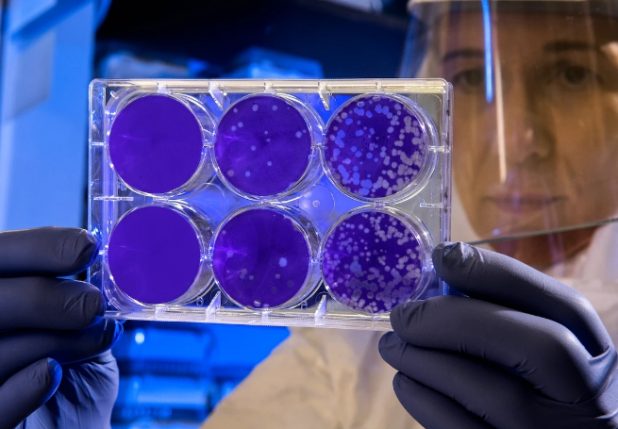
Creating, observing, sharing, analyzing, and interpreting digital images of histological preparations. It has a wide field of application, and its proper use requires appropriate technical equipment, specific training of personnel, and standardization of procedures. For the Whole Slide Image or WSI, a scanner incorporates a microscope and a digital camera, as well as computers, software to create, manage and visualize the image files, and a server.
Whole-slide imaging is the high-resolution digital capture of glass slides to generate “virtual slides.” It consists of a microscope designed to scan one or more slides in an automated fashion (the whole-slide scanner) and accompanying image viewing software that allows users to navigate a slide in a manner similar to Google Maps. It may optionally include an image management platform that provides controlled access and organization, educational tools, and image analysis software for computer-assisted measurement.
Currently, only three systems have been approved for primary diagnosis – one from Philips, one from Hamamatsu Photonics, and the other from Leica. Concerning FDA terminology, the FDA approved the first of these systems based on a successful de novo application as a Class III medical device. Subsequent systems are considered Class II devices which are cleared by the 510(k) pathway. The FDA considers WSI systems to be made up of basic two subsystems – the image acquisition component often referred to as the scanner, and the workstation, or the image viewing software, computer, and monitor/display. The FDA also considers this entire WSI system to be a closed unit.
Most scanners support resolutions of 0.5 microns/pixel (effective viewing magnification: 20X) or 0.25 microns per pixel (effective viewing magnification: 40X). Following image compression, the image files produced may exceed 1 GB in size each.
Unlike chemistry and other analyzers, the scanner is not considered a high-complexity instrument by CLIA and CAP. But the instrument does take skill to maintain and operate.
Digital Pathology streamlines the drug development process through discovery, preclinical, and clinical trials by enabling pathologists to more efficiently illustrate, communicate, and collaborate on crucial findings in tissue-based toxicity and efficacy studies. A few benefits of digital pathology include high throughput scanning of glass slides, quantitative analysis of whole slide images, immediate web-based consultations with expert pathologists, and secure archival of pathology data.
The VIPERx platform was developed with pathologists initially to replicate the manual workflows to accommodate the pathology review process several years ago. The platform, while simple and easy to use, continues to evolve today with enhancements driven by the pathology community.
Kits are provided to collect common samples (blood, urine, biopsies, genetic testing, screenings) and other as needed.
Utilizing kitting services can provide many advantages including: driving greater adherence to specimen collection protocols, customized sample collection and transport kits across multiple protocols and timepoints, simplified workflow and training, while ensuring best practices and reproducibility across your studies.
Our team can work with most shipping providers and commonly works with FedEx, UPS, and World Courier. Our team has negotiated a reduced shipping rate with both FedEx and UPS and can pass those savings onto you.
Authorized users can access the HyperPath Kitting Portal on their computer and request kits. Kitting requests are automatically sent to the HyperPath team so they can be built and shipped quickly to the appropriate location(s).
Biorepositories provide collection, analysis, and “preservation” for retesting in the future
The team at HyperPath Solutions provides professional-level biorepository services to support your company’s core business. Our team provides sophisticated cold chain logistics for pickup, delivery, handling, processing, and storing samples. This service can be used either short-term or longterm as a back up or primary facility for your invaluable research samples. The biorepository model at HyperPath Solutions, can help you advance your projects faster and cheaper by providing centralized and flexible sample access.
The HyperPath team can provide various sample storage temperatures depending on your needs. The most common storage modalities include ambient, -80°C, -20°C, -40°C, 4°C, and LN2 (both liquid phase and vapor phase). All storage has restricted access security along with redundant backup systems and power.